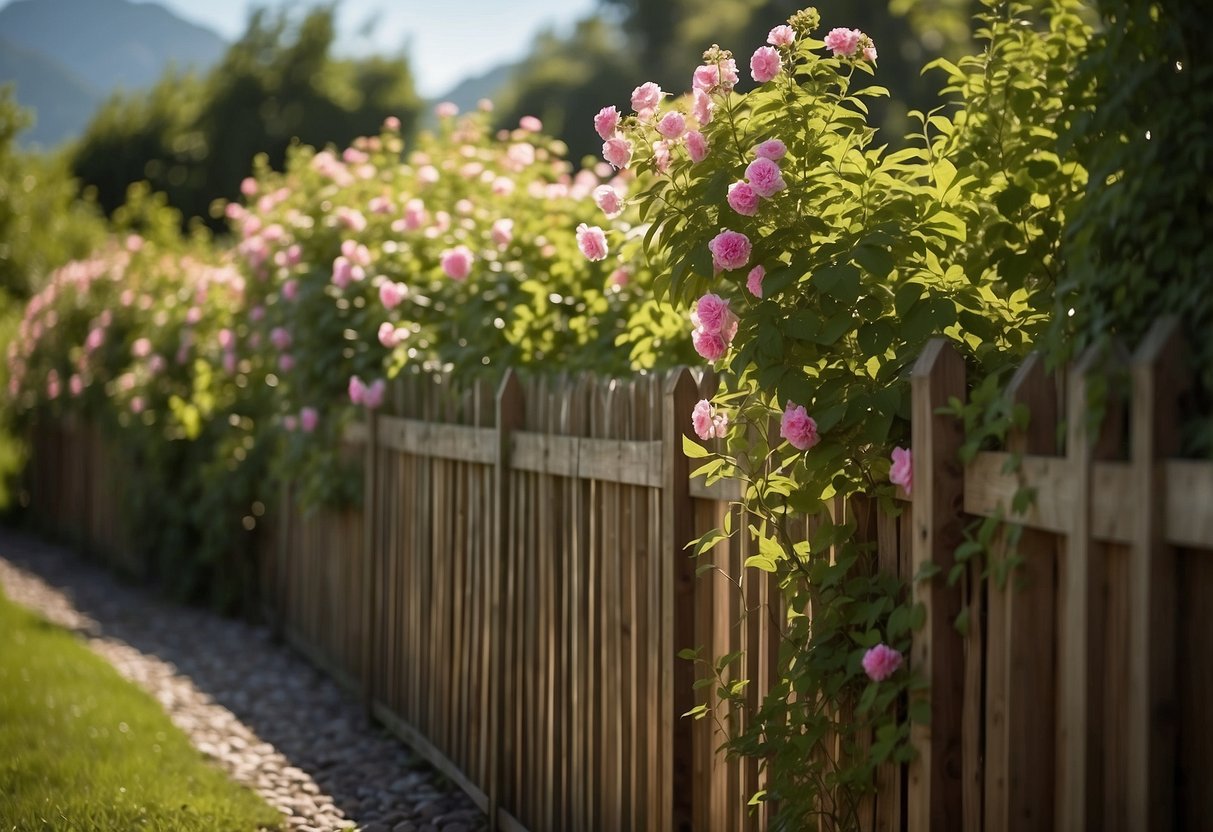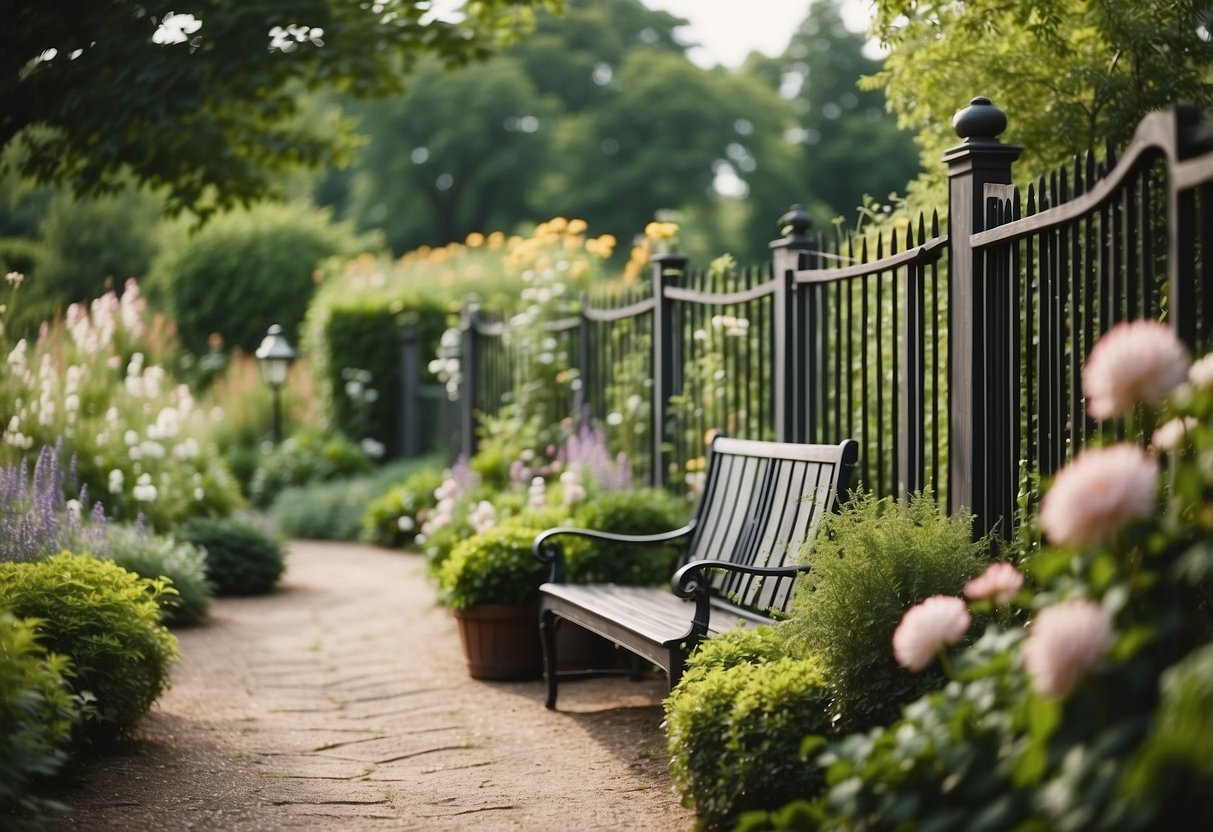Garden Ideas for Privacy: Creative Ways to Shield Your Space
Finding peace and solitude in your own garden can be a challenge, especially in busy neighborhoods. Creating privacy in your outdoor space lets you enjoy your garden without feeling exposed.

How can you transform your garden into a private retreat? By exploring various landscaping and design ideas, you can create a secluded atmosphere that shields you from prying eyes and enhances your garden’s beauty.
1) Bamboo Screens

Bamboo screens are a great way to add privacy to your garden. They are not only effective but also add a tropical touch to your space.
Seabreeze bamboo, for example, shoots up to 30 feet and creates a dense barrier. It grows fast and can thrive in both full sun and part shade.
You can also use bamboo screens in containers if you have limited space. This flexibility makes them perfect for nearly any garden setup. For more details on bamboo plant decor ideas, you can check out these stunning bamboo privacy screen ideas.
2) Tall Hedges

Tall hedges are a great way to create privacy in your garden. They can block unwanted views and reduce noise.
For a classic look, think about planting Green Giant arborvitae. This type can grow quickly and reach up to 60 feet tall.
Another excellent option is the Bigfoot™ cleyera. It grows to 20 feet tall and has glossy, evergreen leaves.
Consider American holly too. It provides good coverage and stays green all year long.
3) Trellised Vines

Using trellised vines is a great way to add privacy to your garden. They are both beautiful and functional. You can let vines like star jasmine or climbing hydrangea grow on a trellis to create a natural screen.
A trellis can also be a stylish feature in your yard. It can fit into any design, whether you prefer a modern or cottage-style garden. Different materials, like wood, metal, or wire, can match your garden’s look.
Hanging lights from your trellis adds a cozy touch for those evening gatherings. With trellised vines, your garden can be a private haven.
4) Decorative Fences

Decorative fences can transform your garden into a beautiful, private retreat. They come in different styles and materials, making it easy to find something that fits your taste.
Wooden picket fences add a classic charm to your space. For a more modern look, metal fences with intricate designs can make a stylish statement.
Don’t forget about vinyl and lattice options. Vinyl is low-maintenance and durable, while lattice fences provide a unique texture and room for climbing plants. Adding some decorative elements to your fence can truly elevate your garden’s appearance and give you the privacy you need.
5) Outdoor Curtains

Outdoor curtains are a stylish way to add privacy to your garden. They can give you a secluded feel while still looking airy and elegant.
You can hang outdoor curtains from a pergola or patio cover. They are great for blocking out prying eyes and creating a cozy atmosphere.
For a breezy vibe, consider light, flowy materials. These will filter sunlight and provide a refreshing, relaxed ambiance. If you need more substantial coverage, heavier curtains work well.
Check out these breezy curtains for inspiration.
6) Garden Structures

Garden structures are a charming way to add privacy to your outdoor space. You can use pergolas, gazebos, or arbors to create secluded spots.
Consider adding a trellis with climbing plants. This not only blocks views but also adds greenery.
You might also want to think about using garden walls or screens. These provide solid barriers and can be decorated to match your garden’s style.
For a more creative approach, try using detached structures like small sheds or garden rooms. These create cozy, private areas in your yard.
7) Water Features

Water features can add a soothing element to your garden. A modern garden pool can bring a sleek and stylish look to your space. Line it with plants to create a calming environment.
If you’re interested in something unique, consider a Japanese fountain. These water features not only look beautiful but also help deter animals.
Even a small, stand-alone pond on your patio can make a big difference. Adding water plants can make it even more attractive.
8) Vertical Gardens

Vertical gardens are a great way to add privacy and style to your outdoor space.
You can use wooden pallets or trellises, which are perfect for holding various plants and creating a green wall.
A vertical garden can provide a natural screen, while also saving space.
Try using tall, leafy plants that grow quickly to get more privacy.
9) Privacy Planters

Privacy planters are a great way to add greenery and create a more secluded outdoor space. You can use tall plants like bamboo or tall grasses in your planters for effective screening.
Planter boxes can be stacked strategically to form a wall, which not only enhances privacy but also adds a decorative element to your garden. Check out some ideas for DIY planters with privacy screens for inspiration.
Combine planters with trellises to grow climbing plants. This will give you a green and living privacy screen that’s both functional and beautiful.
10) Pergolas

Pergolas are a great way to add a touch of elegance and privacy to your garden. They create shaded, comfortable spaces while still allowing light to filter through.
You can enhance privacy by adding climbing plants like jasmine or clematis. Hanging outdoor curtains or screens can also provide additional seclusion.
For more inspiration, check out these pergola ideas.
Understanding Garden Privacy

Creating privacy in your garden can transform it into a peaceful retreat. To achieve this, you need to consider why privacy is vital and the typical challenges you might face.
Importance of Privacy in Your Garden
Privacy in your garden gives you a personal space to relax and unwind. When you feel hidden from nosy neighbors or passersby, it makes your garden a true extension of your home. This sense of seclusion allows you to enjoy outdoor activities like reading, entertaining guests, or simply basking in nature without interruptions.
Also, garden privacy can add to the aesthetic appeal of your outdoor space. Using elements like tall screens, hedges, or vines not only blocks prying eyes but also enhances the natural beauty. Privacy solutions can double as design elements, contributing to a more inviting and harmonious garden environment.
Common Privacy Challenges
One challenge in creating garden privacy is dealing with neighboring buildings or homes that overlook your garden. These structures can make your private space feel exposed. Another issue might be limited yard space, making it tricky to install large privacy features like fences or tall hedges.
Budget constraints can also be an obstacle. High-quality privacy solutions can get pricey, so finding affordable yet effective options is essential. Moreover, some privacy solutions can take time to implement, like growing a hedge or vines. This requires patience, as plants need time to mature and provide sufficient coverage.
For many people, creating privacy in their garden necessitates innovative solutions that balance practicality, aesthetics, and expense.
Design Principles for Garden Privacy

To create a serene and private garden space, you need to consider natural barriers, existing structures, and vertical elements. These principles help to block unwanted views and noise, making your garden a peaceful retreat.
Creating Natural Barriers
Natural barriers like hedges, trees, and shrubs are effective in creating privacy. Hedges such as boxwood or yew can form dense walls that block views and sound. These need regular trimming but provide a classic look.
Trees like cypress or arborvitae can reach great heights and create privacy without taking up too much space. Consider planting them in rows or clusters.
Shrubs like skip laurels and hydrangeas can be used for lower-level privacy. Hydrangeas, with their beautiful blooms, also add a decorative element. You can mix different plants to achieve a layered look, combining height and density for maximum effect.
Utilizing Existing Structures
Existing structures like fences and walls can be enhanced to provide more privacy. Fences can be made taller with extensions or adorned with decorative elements such as latticework. This not only increases privacy but also adds a touch of style.
Walls can be used as a canvas for climbing plants like ivy or wisteria. These plants grow upwards and cover the surface, creating a lush green facade that adds both beauty and privacy.
Consider using screens or panels to divide sections of your garden. Willow or hazel hurdle panels, for example, can mask an ugly wall and create a private area. If you’re budget-conscious, bamboo fencing is a great alternative that offers both height and coverage.
Incorporating Vertical Elements
Vertical elements are key in maximizing space and adding privacy, especially in smaller gardens. Trellises and arbors can be used to support climbing plants, creating living walls that block views and add greenery.
Pergolas are another great option. They provide structure and can be adorned with vines like grape or clematis, offering shade and privacy.
Planters with tall plants or grasses are also useful. Place them strategically around seating areas to create secluded spots. Bamboo in pots is particularly effective because it grows quickly and provides instant privacy.
By integrating these design principles, you can transform your garden into a private and inviting sanctuary.
Long-Term Maintenance Tips for Privacy

Maintaining garden privacy requires choosing the right plants, regular pruning, and adjusting care based on the season. These tips help ensure your garden stays private and beautiful with minimal effort.
Selecting Low-Maintenance Plants
Choosing low-maintenance plants can save you a lot of time and effort. Look for evergreen shrubs and trees as they provide year-round coverage and require less pruning. Examples include boxwood, holly, and privet.
Consider using bamboo for fast-growing, dense privacy hedges. It’s effective and requires less maintenance if you select clumping varieties over running ones, which can become invasive.
Using native plants is another excellent strategy. They are well-suited to your local environment, making them easier to care for and more resistant to pests and diseases.
Pruning and Upkeep
Regular pruning is essential to keep your privacy plants healthy and effective. For shrubs like boxwood and privet, prune in late winter or early spring to encourage dense growth. Use sharp pruning tools to avoid damaging the plants.
For taller plants like bamboo, trim the tops regularly to control their height. This keeps your privacy screen at the desired level without becoming overbearing.
Fertilize your plants once or twice a year to promote healthy growth. Use a balanced fertilizer and follow the instructions on the label to avoid over-fertilizing, which can harm the plants.
Seasonal Adjustments
Adjusting your maintenance routine with the seasons can keep your privacy plants in top condition. In spring, inspect for dead or damaged branches and remove them to encourage new growth.
During summer, ensure plants receive enough water, especially during dry spells. A drip irrigation system can help maintain consistent moisture levels without overwatering.
In the fall, clear away fallen leaves and debris to prevent mold and pests. It’s also a good time to mulch around the base of plants to retain moisture through the winter.
Winter care involves protecting plants from frost and heavy snow. Use burlap wraps or install windbreaks to shield delicate plants from harsh weather conditions.







